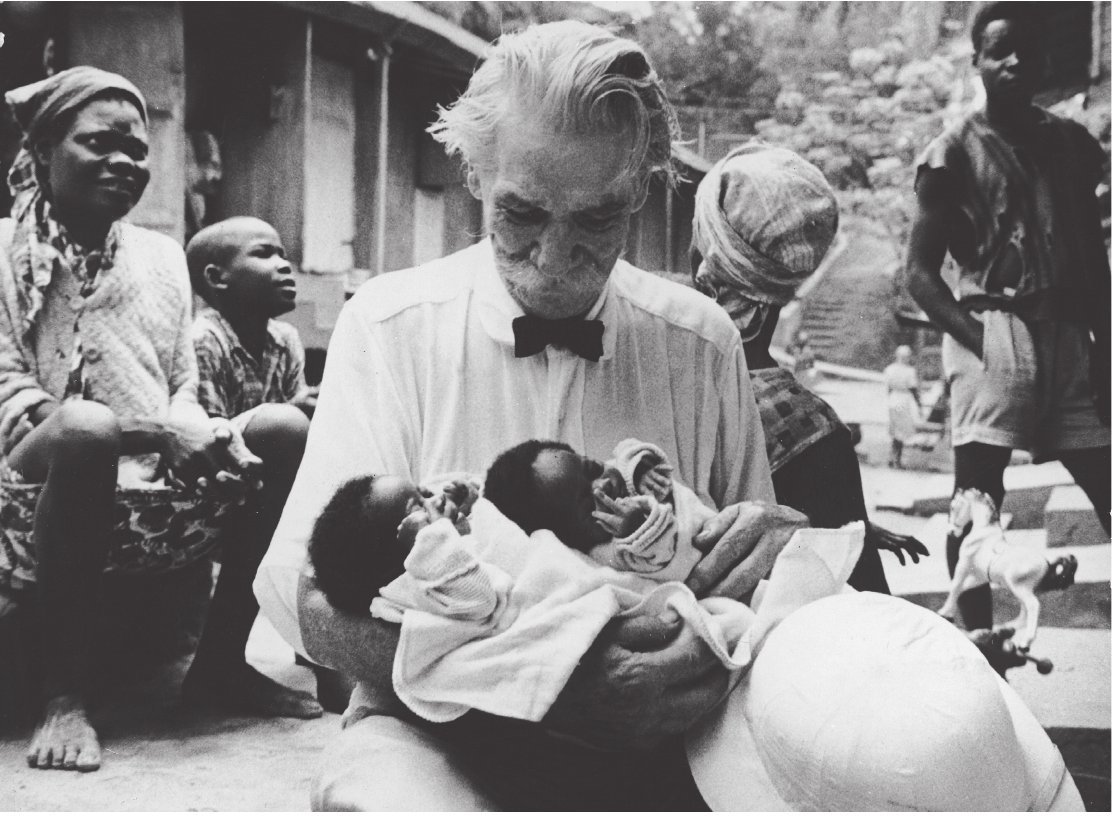
The Albert Schweitzer hospital of the 1960’s was far from the traditional hospital we’re familiar with. It was not a single building filled with beds where patients recovered from illness in a formal setting. Gabonese patients came a long way and stayed in huts, along with those who had brought them.
This was a hospital where no one was asked, “Are you insured? Can you pay?” Everyone in need was treated. Patients who were able, paid a normal fee, or they paid in produce, a cock, eggs, or a goat.
Life in this community was simple. It resembled a cheerful African village, with Gabonese in colorful dress and children roaming the streets.
Bells were important to keep the community running smoothly. Schweitzer said, “We live simply. No one needs a watch. A watch would not last long in the heat and humidity anyway. The day’s activities are separated by the gong. A bell tells you when it is time to eat or time to work.”
The plumbing was elementary and electricity was available only for the X-ray machine and the lights in the operating room. Every day was laundry day. With no running water, natives washed their clothes at the riverbank. Ironing was done twice a week.
Surgery, except in emergencies, was scheduled for Tuesdays, Thursdays and Saturdays. On Wednesdays and Thursdays, the truck arrived carrying bananas from neighbouring villages. Saturday was cleaning day and payday.
For lunch, the staff met in the dining hall and the patients prepared their own meals with the bananas, rice, manioc, and palm oil provided. At 7 the bell sounded for dinner and the staff gathered at the table, lit now by the kerosene lamps. After dinner, Dr. Schweitzer played a hymn on the piano while the others sang. He read from the Bible, both in German and in French, inviting comments as he did so.
This has been Part 36 of the Series A Life Worth Living. Read Part 37 Caring for the Sick.
Leave a Reply